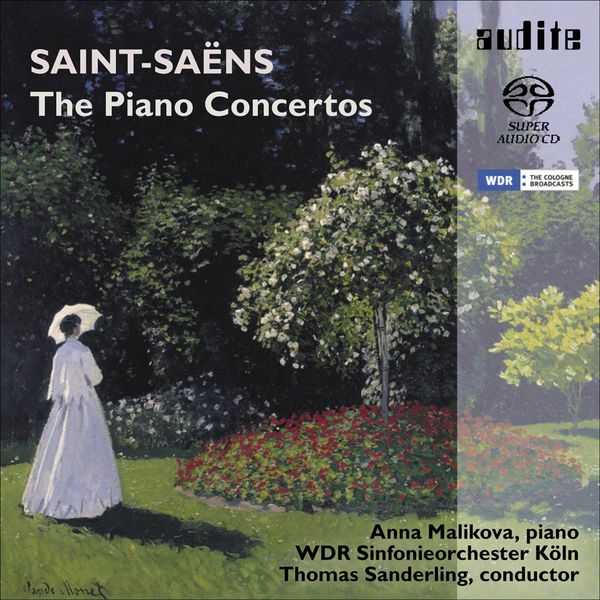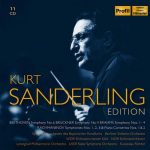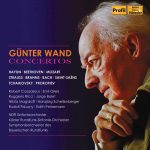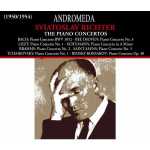
Composer: Camille Saint-Saëns
Performer: Anna Malikova
Orchestra: WDR Sinfonieorchester Köln
Conductor: Thomas Sanderling
Number of Discs: 2
Format: FLAC (tracks)
Label: Audite
Release: 2010
Size: 507 MB
Recovery: +3%
Scan: cover
CD 01
Piano Concerto No. 1 In D Major Op. 17
01. I. Andante – Allegro assai
02. II. Andante sostenuto, quasi adagio
03. III. Allegro con fuoco
Piano Concerto No. 2 In G Minor Op. 22
04. I. Andante sostenuto
05. II. Allegro scherzando
06. III. Presto
Piano Concerto No. 4 In C Minor Op. 44
07. I. Allegro moderato – Andante
08. II. Allegro vivace – Andante – Allegro
CD 02
Piano Concerto No. 3 In E-Flat Major Op. 29
01. I. Moderato assai – Piu mosso
02. II. Andante
03. III. Allegro non troppo
Piano Concerto No. 5 In F Major Op. 103
04. I. Allegro animato
05. II. Andante
06. III. Molto allegro
Throughout his lifetime that spanned nearly nine decades, Camille Saint-Saëns turned to the piano concerto five times as a vehicle not only to demonstrate his own considerable prowess on the instrument, but also to advance the concerto form and elaborate on his ideal relationship between soloist and orchestra. Ranging from the first concerto — a model of youthful impetuousness and bravura — to the fifth concerto written nearly four decades later — an exploration of near-exoticism — Saint-Saëns frequently experimented with new formats that challenged the traditional three-movement concerto. Of the five, the Second Concerto is by far the most frequently performed and ranks among the composer’s best-known works overall. The other four works are not without their merits, though, and this Audite album that brings them all together on two hybrid SACDs is a welcome addition. Pianist Anna Malikova is joined by the WDR Sinfonieorchester Köln under Thomas Sanderling in a series of performances that makes all of the concertos just as exciting, dramatic, and intricate as the beloved Second. Malikova’s playing is tight, with immaculate articulation, clear voicing, and nimble passagework. She demonstrates a clear connection with the score through her appropriately sentimental performance of slow movements, and her connection with the orchestra is organic and seamless. Audite’s sound is especially clear and warm, and listeners utilizing the multichannel track will enjoy a nice sense of being in the midst of the orchestra. Listeners unfamiliar with concertos other than the second will find this set a welcome addition to their collections.



